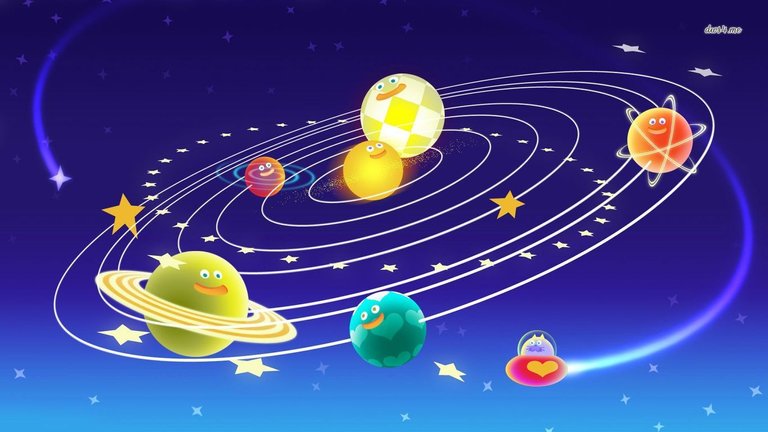
Hello, dear family Steemit! Welcome to our virtual classroom, the set of planets, satellites and other minor stars (such as asteroids, comets and all kinds of interplanetary matter, which are arranged around the Sun, is called the Solar System). This beautiful day I bring a very important content for the development of any child, so I invite you to enjoy this class where we can clarify the doubts and doubts of children about our solar system.
THE SOLAR SYSTEM
The solar system consists of the sun, the planets that revolve around it and the satellites of these planets. We live on planet Earth.
In the area closest to the Sun there are nine planets: Mercury, Venus, Earth, Mars, Jupiter, Saturn, Uranus, Neptune, and Pluto. In the most remote areas, there are millions of tailless kites that also revolve around the sun.
Who is the king's star?
The king star is popularly known as THE SUN, it is a star so big that a million lands would fit in it! It produces the light and heat we need to live, but because it is very intense, the Earth is surrounded by a layer of air that protects it.
How did the solar system originate?
The theories about the emergence of the solar system are multiple. The most accepted states indicate that the dust and gas nebula, composed mainly of hydrogen and helium, disintegrated more than five billion years ago. After this explosion, the largest amount of nebular mass was grouped into a center that gave rise to the sun. This began a series of transformations from its core, which allowed it to radiate light and heat.
The rest of the nebula formed planets that, because they did not get enough mass to have their own source of energy, still described orbits around the sun.
These planets, under the influence of the solar rays, further reduced their masses, evaporating the gases that originally formed them.
How is our solar system?
The inner region, near the Sun, composed of four small planets, Mercury, Venus, Earth and Mars, rich in metallic components.
Uranus and Neptune are rich in heavier gases (such as methane and ammonia).
What is the order of the planets in our solar system?
- Mercury is the smallest planet and the one that is close to the sun, that's why its temperature is very high. Its surface presents craters, plains, and mountains.
- Venus is a planet a little smaller than earth. It is covered by a layer of clouds that capture a lot of sunlight, it is the brightest planet and is visible to the naked eye from earth. Venus has no satellites around it.
- The earth, are the poses that we inhabit. It seems that it is the only one in which there is life. It is surrounded by a layer of air, called atmosphere, which protects us from the sun's rays, the earth has the shape of a ball, although it is not flattened. Your satellite is the moon
- Marte, one of the smallest planets, is red. It lacks water, hardly has air and the temperature of its surface is very low.
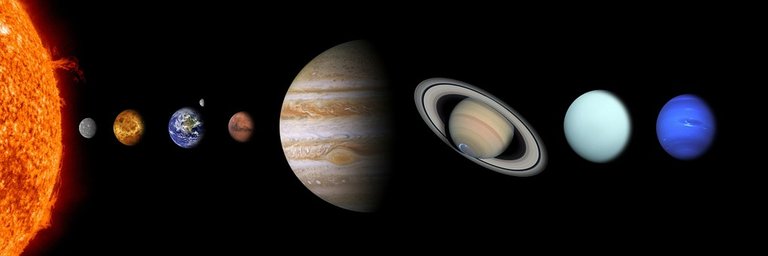
pixabay
- Jupiter is the largest of all the planets and has a yellowish color. It has 16 satellites.
- Saturn, surrounded by rings of ice and rocks, is the second largest planet.
- Urano has a green disc shape. It was the first planet discovered with the telescope. It has 27 satellites.
- Neptune is very far from the sun so it is also very cold, it is blue, it has 13 satellites.
- Pluton, it is so far from the sun that it barely reaches its heat. It is the coldest planet.
Did you know ... An astronomer is a person who studies the universe and the bodies that compose it?
Why these names?
The planets of our solar system were named in honor or the gods. Jupiter, Saturn, Mars, Venus, and Mercury received their names many, many years ago. When the telescopes were invented, the other planets were discovered. The tradition of naming the planets in honor of the gods continued with the last three planets discovered.
- Mercury, chosen in honor of the traveling Roman god.
- Venus, in honor of the goddess of love and beauty.
- Mars was the god of war.
- Jupiter was the king of the Roman gods.
- Saturn was the Roman god of agriculture.
- Uranus, in honor of an ancient king of the Greek gods.
- Neptune was the god of the sea.
- Pluto, was the Roman god of the underground world.
The moon is a satellite?
The moon is the satellite of our planet earth. All the planets, minus Mercury and Venus, have at least one satellite spinning around them, including Earth, the moon of Ganymede Jupiter, the largest moon in the Solar System and Titan, Saturn's moon. The moon of the Earth, the moons of Jupiter Callisto, Io and Europe; and the moon of Neptune, Triton, all are larger than Pluto but smaller than Mercury.
Did you know that ... on July 20, 1969, astronauts Neil Armstrong and Edwin Aldrin stepped on the moon for the first time and arrived on the Apollo 11 spacecraft?
Which planet rotates around its own axis faster?
The fastest planet that is turned on is Jupiter, which rotates on average once in just under 10 hours. It's very fast, especially considering how big Jupiter is. This means that it has the shortest days of all the other planets in the Solar System. The day of Jupiter varies from 9 hours and 56 minutes around the poles to 9 hours and 50 minutes near the equator.
What is the highest mountain in our solar system?
Mount Olympus is the volcano and the highest mountain in the Solar System, it is on the planet Mars and it is 16 miles (24 kilometers) high, which makes it three times as high as Mount Everest. Mount Olympus is also very wide (340 miles or 550 kilometers) and covers an area larger than the entire chain of Hawaiian islands.
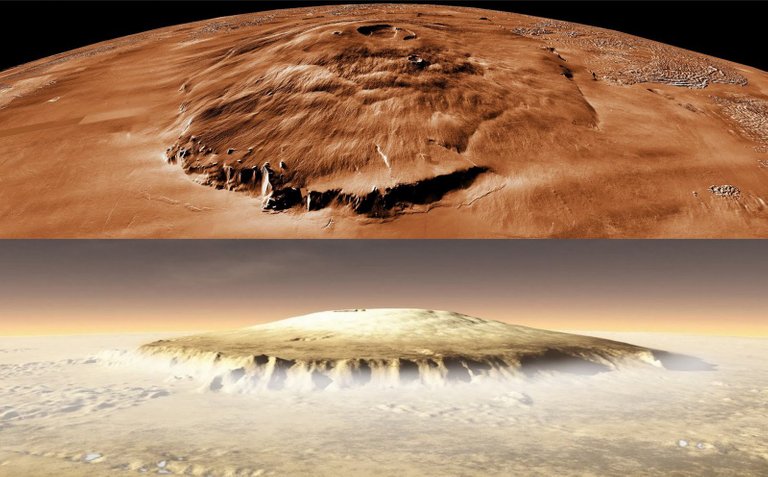
CONCLUSION
- Our planet Earth is the third planet of the Solar System and is the only one that, until now, has allowed the development of life. The scientific advances made it possible to demonstrate fully that the Earth presents a spherical shape, somewhat voluminous in the equatorial zone and flattened at the poles.
- Ganymede is the Moon of Jupiter, and the largest in the Solar System, it has a diameter of 3270 miles (5,268 km) and is larger than the planets Mercury and Pluto. It has a rocky core surrounded by a mantle of watery ice and covered in turn by a crust of rocky ice.
Thank you all for joining me in this fantastic and perfect exercise for the development of children. With this fun series of questions and answers, you can have a good time with the little ones in the house, help you in your physical and mental development, allowing you to expand your technique of concentration and observation to help you understand your environment.

REFERENCES
- Solar System
- Planets of the solar system: order of the 8 (or 9) planets
- Formation of the solar system. Spanish!
- The Sola system and its planets. Spanish!
- History of the hypotheses of formation and evolution of the Solar System
- Solar system for children Spanish!
- Natural satellites. Spanish!





I dedicate this work to the community of @tribesteemup, with the intention that they can know my work. Thanks to the wonderful idea of @kennyskitchen, and the great support of @adamkokesh, for leading this beautiful project called @tribesteemup. I love what you are doing, thanks for the infinite support to our community and I have my support at all times.



Make The World A Better Place
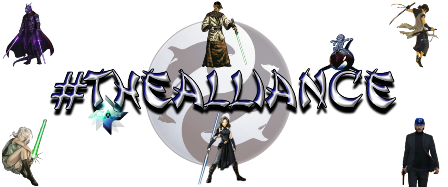


Join us @steemitbloggers
Animation By @zord189
..............................................
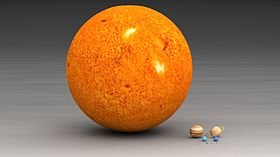
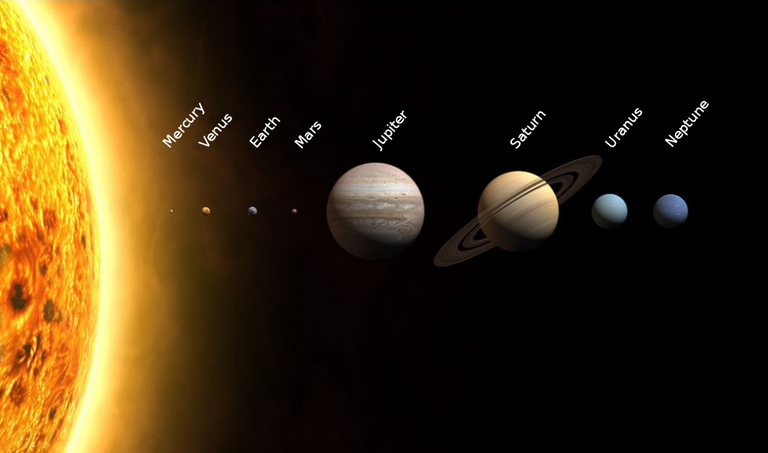
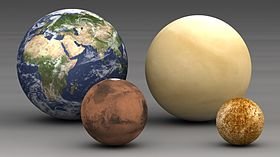
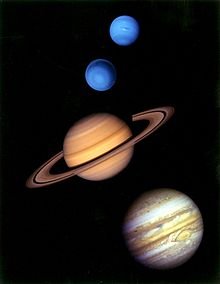
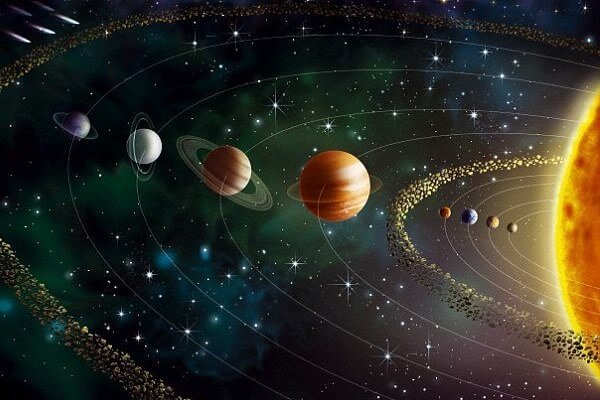
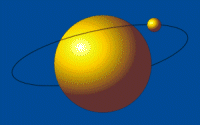
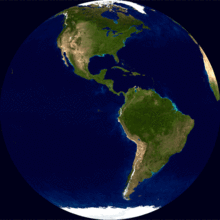
Congratulations!,@saracampero Your post has been upvoted by @reach.curation through the @reachout project
Our goal is to support Minnows on Steemit.
Join our discord group https://discord.gg/NWAkKfn
Major Upvote Sponsor : @bleepcoin
SP Donation by @rufans & @solomon507
Join Our Trail here: https://steemauto.com/dash.php?i=15&id=1&user=reachout
Congratulations @saracampero your post had been selected for an upvote worth ~$1.67 as part of the @ecoTrain minnow support project. Your upvote will come soon!
I hope this encourages you to keep writing amazing posts and making this world a better place!.
JOIN US ON DISCORD
https://discord.gg/XwAmRWW
Thank you for appreciating my work dear @eco-alex! Greetings and blessings to all passengers @ecotrain...
Great post @saracampero, congratulations!
Thanks honey!
I like your articule. Excellent
thanks for your support girl. blessings
Really awesome post. Keep the good content coming.
Thanks por your visit. Blessings!...
Congratulations friend grea job!
Thanks dear friend.!
thanks for the informative article, shared
thanks for your support dear @sayee
GREAT POST!!!! :D
Thanks dear @mythologyupvote
Congratulations! Your post has been selected as a daily Steemit truffle! It is listed on rank 1 of all contributions awarded today. You can find the TOP DAILY TRUFFLE PICKS HERE.
I upvoted your contribution because to my mind your post is at least 54 SBD worth and should receive 284 votes. It's now up to the lovely Steemit community to make this come true.
I am
TrufflePig, an Artificial Intelligence Bot that helps minnows and content curators using Machine Learning. If you are curious how I select content, you can find an explanation here!Have a nice day and sincerely yours,

TrufflePigThanks for visiting @trufflepig, I hope your prediction is fulfilled! God bless, hope to continue seeing you here.
Without a doubt, it is a very interesting topic and I am sure that it will attract the attention of the little ones, good thanks for sharing!
Dear @lasocia very interesting, so do not hesitate an instant share it. Thank you for your visit! see you at the next class...
Nothing better than the universe to sparks a child imagination. Who said learning can´t be fun? Great post!
ptgram power
Thank you for visiting friend @fireguardian, see you at the next class.
Nice post, very good.
ptgram power | faça parte | grupo steemit brasil
Thanks your support dear @mracalf
This is a very nice job @saracampero and i really need ur hands of blessing on a very serious note. Thanks for the good articles.
Thank you for appreciating my work @princedone, I glad my articles to be well received by my steemit brothers! God bless our community!
If you would like to support the educational community by delegating to @steemiteducation, please click on any of the following links. This will ensure that more teachers are supported on a daily basis.
100SP 200SP 300SP 400SP 500SP 750SP 1000SP 2000SP 3000SP 4000SP 5000SP 10,000SP 25,000SP